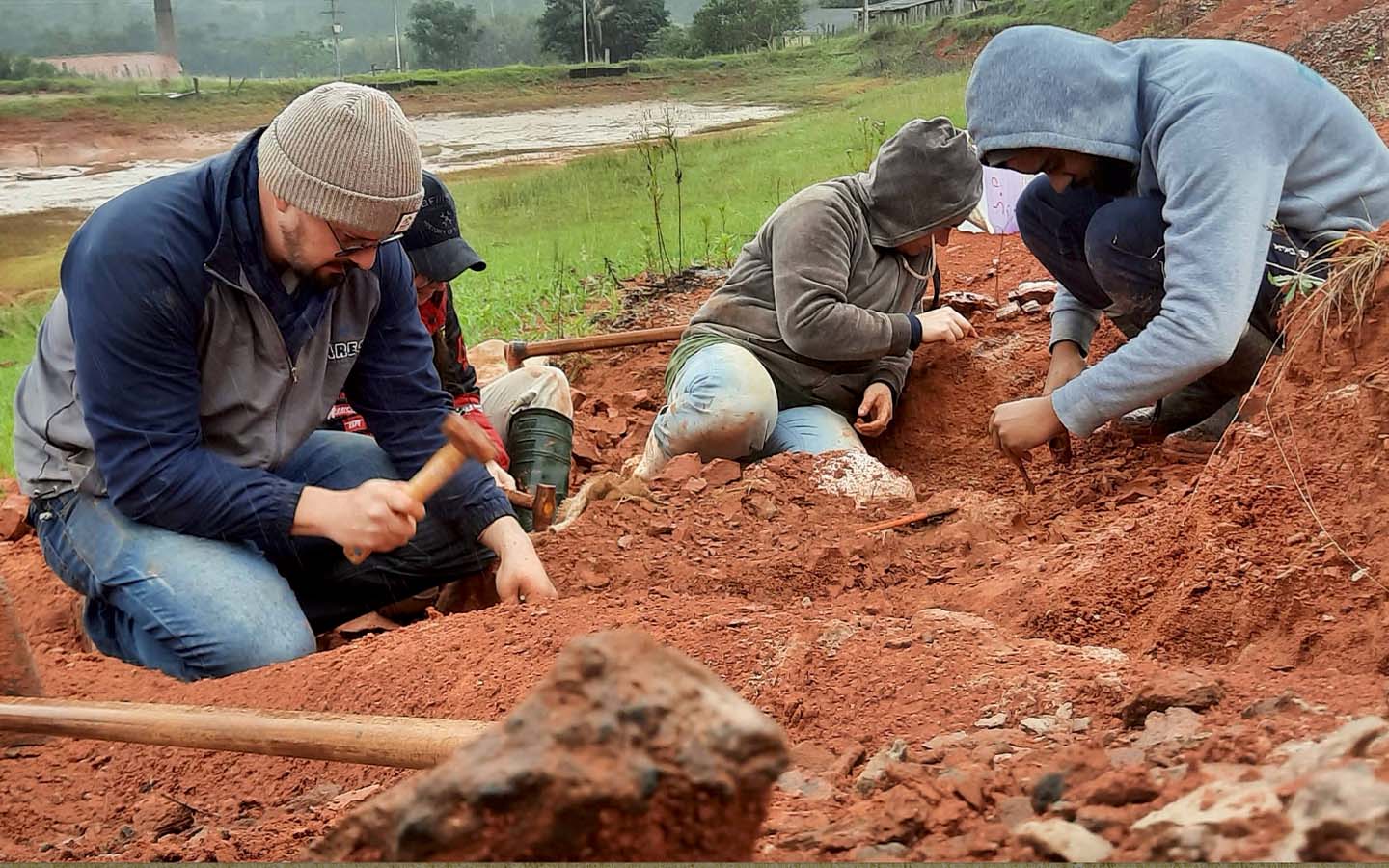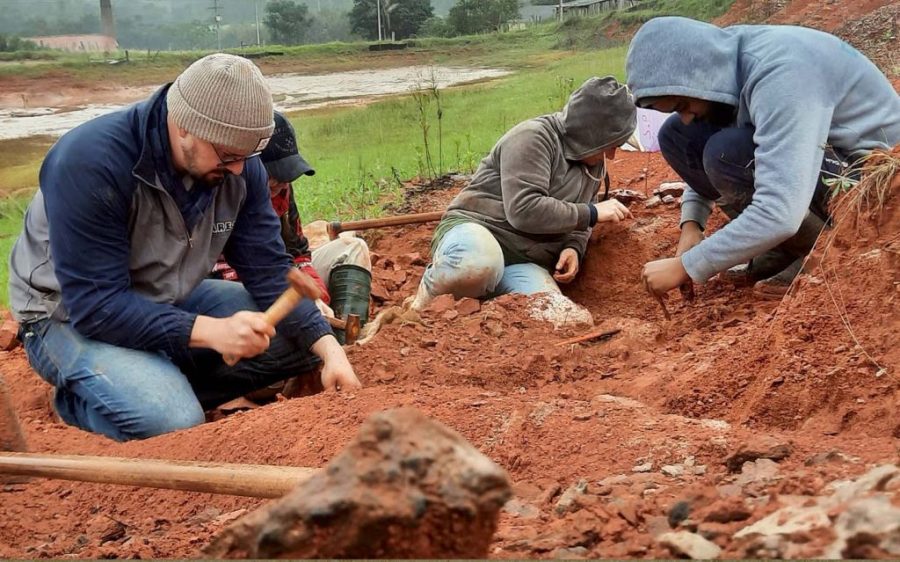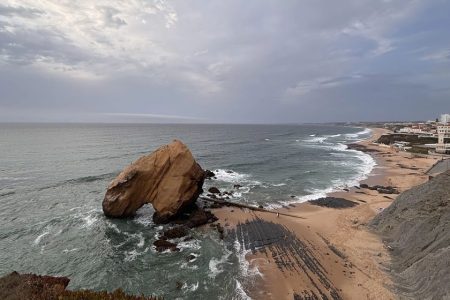A team of Brazilian scientists has uncovered a fossil believed to be one of the world’s oldest dinosaurs, after the remains were partially revealed by the devastating rains that flooded Rio Grande do Sul in Brazil in early May.
The team from the Federal University of Santa Maria (UFSM), led by palaeontologist Rodrigo Temp Müller, believe the fossil is a type of Herrerasauridae, a family of carnivorous dinosaurs originating in the late Triassic period some 233 million years ago. The best-known examples of this family have been found in what are now Brazil and Argentina, although at the time all continents were part of a single landmass known as Pangea.
The team discovered the fossil next to a reservoir in the municipality of São João do Polêsine and spent around four days excavating the block of rock containing the remains before transporting them back to the laboratory to run tests. What were initially believed to be a few isolated bones were later revealed to be a nearly complete skeleton – possibly the second-most complete for this family of dinosaurs.
[See more: New archaeological finds open a window into Brazil’s past]
Now the focus has shifted to determining whether the fossil belongs to a known species of Herrerasauridae or a new one, a process the team expects to take several months as they work carefully to avoid damaging the specimen. Based on the size of the bones, they believe that the bi-pedal dinosaur would have reached around 2.5 metres in length.
Rain removing sediment to expose fossils is known as weathering, and while it can lead to discoveries like that of the UFSM team, it can also be incredibly damaging to these delicate specimens. Müller described the dig in May as a race against time to rescue the fossils before they were ruined. The team observed “a leg bone and a pelvis bone in the pelvic region that were already being destroyed due to the rain,” he said.
The flooding in Rio Grande do Sul had a devastating impact. At least 182 people were killed as record rainfall overwhelmed the southern Brazilian province in late April and early May.






